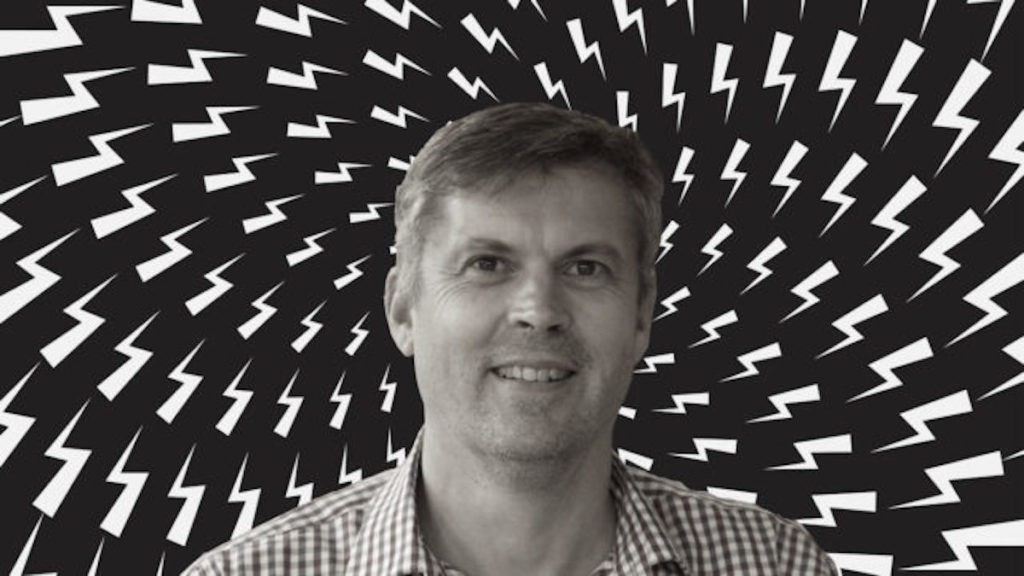Dr Boreham’s Crucible: Is this a case of what’s good for Mesoblast is good for Cynata?

Tim Boreham is one of Australia's best-known small-cap share analysts and business journalists.
The changing of the guard is not just evident at Buckingham Palace: barely a week goes by without an ASX-listed biotech announcing a new person at the helm.
In the case of the junior stem-cell therapy developer Cynata (ASX:CYP), incumbent Dr Ross Macdonald announced his retirement after 10 years in the job, to be replaced with chief operating officer Dr Kilian Kelly.
Dr Kelly joined the company at the same time as Dr Macdonald, who was brought in by Cynata’s Perth-based backer Forest Capital (as was director Dr Stewart Washer, who has also left the building).
Before then, Dr Kelly had senior roles at influenza drug house Biota and stem-cell peer Mesoblast.
Unlike with some other regime changes in the sector, Dr Kelly says there are likely only to be peripheral changes in terms of how he runs the joint.
“Everyone CEO has slightly different views, but we will continue to focus on the existing programs,” he says.
Cynata’s clear priority is to advance its Phase 2 clinical trial for graft-versus-host disease, or GvHD – an immunological condition that afflicts bone-marrow recipients and is usually fatal for patients resisting steroid treatment.
Cynata is a case of Covid interruptus in that this program – as well as an investigator-led one for knee osteoarthritis – was seriously delayed by the pandemic.
The perceived lack of headway has resulted in Cynata shares losing more than 60 per cent of their value over the last year – a fact not lost on Dr Kelly.
“We have been absolutely hammered and effectively are at all-time lows,” he says.
The birds and the bees of iPSCs and MSCs
Cynata is all about harvesting induced pluripotent stem cells (iPSCs), from which mesenchymal stem cells (MSCs) are derived.
MSCs are adult stem cells which can be isolated from human and animal sources and can produce more than one kind of specialist cell.
Cynata says iPSCs are economically advantageous in that they are generated from a donation from a single donor, resulting in product consistency, scalability and potency.
‘Pluripotent’ means the iPSCs could develop into any type of adult cell. They can be derived from anywhere in the body – typically skin and blood – and grown in limitless quantities in the lab.
Known as Cymerus, Cynata’s platform for making MSCs stems from the University of Wisconsin-Madison, the centre of US stem cell research. The university’s Prof Igor Slukvin co-founded Cynata, with the aim of licencing the technology from the Wisconsin Alumni Research Foundation.
Cynata back-door listed in October 2013 via the shell of green nappy maker Eco Quest.
Turning Japanese
There are strong Japanese links with Cynata, in that Kyoto University’s Dr Shinya Yamanaka won a Nobel Prize in 2012 for his pioneering work in iPSCs.
In late 2019, Cynata forged an alliance with Fujifilm, which had long forsaken happy snaps for medical applications.
The deal involved Fujifilm funding the development of CYP-001 (the GvHD therapy) in return for the global selling rights, with Cynata in line for milestone and royalty payments.
A planned global trial was derailed by Covid and then Fujifilm’s decision to emphasise cell manufacturing rather than developing its own stem-cell products.
In 2021, Fuji and Cynata agreed that the development rights would revert to Cynata, but the parties signed a new agreement with the parties agreeing to establish a Cymerus manufacturing plant in Japan.
Interestingly, stem cell leader Mesoblast’s (ASX:MSB) only approved therapy to date is for steroid-resistant GvHD in Japan (marketed by JCR Pharma).
Japan also features strongly because former Prime Minister Shinzo Abe was a huge supporter of cell therapies and regenerative medicine. Abe was assassinated in July last year, after he had left office, but his legacy is regulation allowing accelerated approval of any kind of regenerative medicine therapy.
Good vibes Here Dudes
The original idea was that Fujifilm was to carry out a trial for GvHD using Cymerus, scheduled by the end of (Covid-ridden) 2020.
“We have put Japan on ice and are now moving forward with a global Phase 2 trial, with sites in the US, Australia and Europe,” Dr Kelly says.
The randomised, double-blinded, placebo-controlled trial will be run at multiple centres in the US, Europe and here, with a targeted enrolment of 60 patients.
The first sites (in Europe) are expected to open in August.
The trial will compare patients receiving the standard-of-care steroids with a placebo, versus those receiving steroids and the stem cell potion.
Dr Kelly says it’s possible – just possible – that the GvHD trial could support marketing approval in the US without a follow-on Phase 3 effort.
“No regulation says you have to do a Phase 3 trial; you need data from an ‘adequate and well-controlled’ trial to support efficacy and safety,” he says.
“It is a rare disease with a significant unmet need, so we tick those boxes.”
The Phase 1 effort met all endpoints, with the results aired at the International Society of Cell and Gene Therapies’ shindig in Paris in early June.
The delegates heard that nine of the 15 patients treated with CYP-001 survived at the two-year mark. This compared “highly favorably with previously published outcomes, including for current steroid-resistant GvHD drugs”.
The trial marked the first time any patient had been treated with iPSC-derived MSCs – their own cells or otherwise.
A treatment we kneed
While GvHD is Cynata’s lead indication, a Phase 3 trial for moderate knee osteoarthritis sufferers is about to get underway under the auspices of the University of Sydney.
Aimed at enrolling 440 patients, the double-blinded, placebo-controlled trial will assess the effect of injected Cymerus over two years, the co-primary endpoints being patient-assessed pain reduction and reduced cartilage loss.
Recruitment is expected to be completed by the end of 2023.
The trial is sponsored by the University of Sydney and fully funded by a $2 million grant from the National Health and Medical Research Council (NHMRC).
Dr Kelly estimates that if Cynata had to fund the trial, it would cost $20 million to $30 million.
Cynata will provide the product and is entitled to access all the data.
Dr Kelly says the patients are not about to have a knee reconstruction – but they are certainly headed in that direction.
“Hopefully we can intervene and at a minimum resolve the pain and inflammation and stop it from getting worse.”
Given the NHMRC is providing the cheque, the trial sites are Australia-only, but the results could be acceptable to overseas agencies.
“It’s a very exciting trial and a huge opportunity for us to get a huge trial done without paying for it at commercial rates,” Dr Kelly says.
Stay focused…
Astonishingly, more than 1,200 MSC trials have taken place over the last decade, covering 300 indications. The main diseases of interest are GvHD, heart disease and osteo-arthritis and fibrotic indications such as idiopathic pulmonary fibrosis.
Cynata is involved in early-stage trials for diabetic foot ulcers and renal transplants.
An Adelaide-based diabetic foot ulcer trial aims to enrol 30 patients, randomised against the standard-of-care dressing.
“This one’s a bit different, because we are applying the cells topically, using a dressing,” Dr Kelly says.
“The number of cells we need is less than a million cells compared with an intravenous infusion of up to 200 million cells. So, it could be a more cost-effective approach.”
Preliminary data from patients in the trial has been “promising”.
Cynata has also carried out pre-clinical work on renal transplants, in league with the Liden University Medical Centre in The Netherlands.
Early results suggest MSCs can improve tolerance and avoid solid-organ rejection.
Dr Kelly says current anti-rejection (immune suppressant) drugs are extremely toxic and – ironically – cause kidney damage and increase the risk of cancer.
“Anyone who uses them would love to not have to use them.”
Warning: AO content
Cynata’s GvHD trial is ‘adults only’, but the company would look to include children in any expansion study.
Meanwhile, Cynata’s stem cell ‘frenemy’ Mesoblast is awaiting a US August 2 D-Day to see if the FDA will accept its marketing application for its paediatric GvHD treatment.
Dr Kelly notes that about 90 per cent of GvHD patients are adults, although there’s the prospect of the off-label use of Mesoblast’s kids’ treatment in grown-ups.
Despite the prospect of a rival product in the world’s most important market, Dr Kelly says he would be pleased if Mesoblast won approval.
“It would be a tick for all MSC-based therapies,” he says. “We would rather compete [with Mesoblast] than compete with nothing.”
Finances and performance
Cynata is riding out the funding nuclear winter that has enveloped the biotech sector.
In early April, the company completed a placement to raise $5 million at 21.5 cents, a then 2.5 per cent discount to the prevailing price.
A follow-on share purchase plan sought to raise $2 million, at 15.5 cents apiece. Encouragingly, this was oversubscribed by $50,000.
One out of every two shares issued comes with options exercisable at 30 cents.
The funds will be used to support the GvHD trial, costed about $10 million.
Cynata shares peaked at a 12-month high of 44 cents in August last year and a record high of $1.80 in 2019. They sunk to a record low of 10.5 cents on July 4 this year.
Post raising, Cynata has about $17.5 million in the bank, not much less than its $23 million market capitalisation.
Cynata stock share price today
Dr Boreham’s diagnosis:
Research house Oliver Wyman estimates there are 4,000 cases of GvHD a year in the US.
The firm says the newly-diagnosed market is worth $US85 million ($125 million) and the steroid-resistant market is $US125 million (because of higher pricing for this smaller, but more difficult sector).
“If you don’t get acute GvHD under control quickly, the prognosis is terrible – 80 to 90 per cent mortality in two years,” Dr Kelly says.
“But we must be realistic. Steroids are very cheap and work in around 30 to 50 per cent of patients. So, there will be a tendency to use steroids in milder cases to see if they do work.”
While expensive, the stem cell therapies are attractive to payors (insurers) because patients don’t have to take the drug forever.
In some cases, the GvHD is “completely resolved” in days, although given their underlying malignancies patients should not expect a telegram from the King.
“But they stand a chance, which is why there is a willingness to pay for fairly expensive treatments,” Dr Kelly says.
Cynata’s lowly valuation leads investors to ponder the ‘sliding doors’ moment of Sumitomo’s 2019 provisional $2 a share cash bid for the company, which didn’t get over the line. But Dr Kelly is unfazed.
“Objectively it’s hard to explain why we would be worth less now than 10 years ago, when we didn’t even have a manufacturing process,” he says.
“My view is it is clinical data that will change the course of the share price.”
Dr Boreham is not a qualified medical practitioner and does not possess a doctorate of any sort. He has a strong suspicion he is worth less than he was 10 years ago in inflation-adjusted terms.
This column first appeared in Biotech Daily.
The views, information, or opinions expressed in the interviews in this article are solely those of the interviewees and do not represent the views of Stockhead. Stockhead does not provide, endorse or otherwise assume responsibility for any financial product advice contained in this article.
Related Topics

UNLOCK INSIGHTS
Discover the untold stories of emerging ASX stocks.
Daily news and expert analysis, it's free to subscribe.
By proceeding, you confirm you understand that we handle personal information in accordance with our Privacy Policy.








